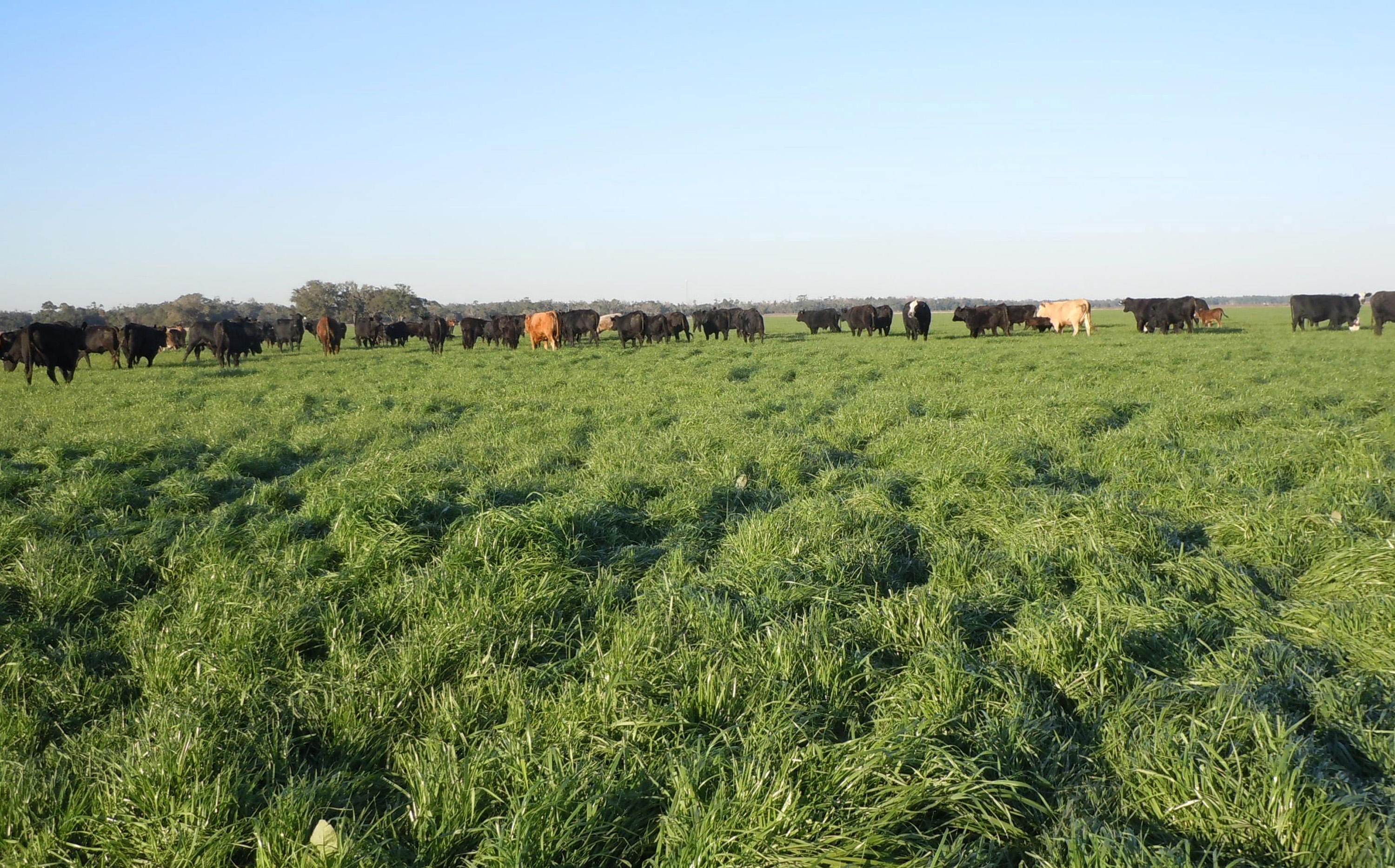Farm & Ranch
Meanwhile back at the ranch…

By Rafford Pullen
Fall is just around the corner, and now is the time to make plans for our winter forage program. How much, what and when are just a few of the questions we need to be thinking about since in the North Texas area, our ryegrass and small grains will be planted in September.
This article will be devoted primarily to the best method on “how to plant” your winter forages to get the best results. Most of these planting methods can also be found by going to our website, www.pullenangus.com, and clicking on the Marshall Ryegrass tab.
Over-seeding perennial pastures is by far and away the most popular way winter forages are planted by cattle producers. Most failures are seen where pastures are seeded by either a no till drill or broadcast into a pasture where the grass is so tall that sunlight cannot reach the seed after it germinates.
Plants do not grow in the shade, and as a result, there will not be much, if any, growth until the existing forage has been set back by a freeze, which usually occurs in November and by that time day length is shorter, temperatures are lower and there is little to no growth until spring.
There are several options to prevent this and the best overall, in my opinion, is to graze the pasture very short then run a disc over it set straight since we are not trying to turn any soil but only trying to cut the roots on the existing pasture to allow sunlight penetration to begin as soon as the winter forage germinates.
In the case of broadcast seed, it makes no difference if you disc prior to or immediately after seeding. If the seed is planted with a no till drill, running the disc prior to planting would be our choice. While not entirely required if using a no till drill, the disc will set the grass back better than the drill. Research done on this resulted in doubling the amount of fall forage verses planting in short grass only.
To read more pick up a copy of the August 2017 NTFR issue. To subscribe call 940-872-5922.
Farm & Ranch
Hazards of Backyard Poultry

By Barry Whitworth, DVM
Having backyard poultry is a popular agriculture enterprise. According to the United States Department of Agriculture, 0.8 percent of all households in the United States have chickens. People keep chickens for a variety of reasons with table eggs being one of the more common reasons.
Unfortunately, some of these poultry producers are not aware of the hazards that come with keeping poultry because many times they carry pathogens but appear healthy.
Chickens are carriers of several zoonotic diseases. These are diseases that can be passed from animals to humans. According to a recent survey in Pennsylvania, a majority of backyard poultry producers were aware of the dangers of avian influenza. However, this study also revealed that far fewer producers were aware of the risk of possible exposure to Salmonella and Campylobacter.
The lack of knowledge about the hazards of raising poultry likely contributes to the continued issues of Salmonella outbreaks associated with backyard poultry. In 2023, the Centers for Disease Control and Prevention reported 1,072 illnesses of Salmonella linked to backyard poultry, and 272 of those patients required hospitalization. Oklahoma reported 43 individuals with the disease.
To read more, pick up a copy of the April issue of NTFR magazine. To subscribe by mail, call 940-872-5922.
Farm & Ranch
Ag Elsewhere: Wyoming

By Tressa Lawrence
Babies are tucked away in every nook and cranny. Many ranchers across Wyoming have baby animals popping up all over this time of year.
Farm & Ranch
Ag Elsewhere: Montana

By Lindsey Monk
Another load of grain in to keep feeding the calves until the green grass can really start popping.
-

 Country Lifestyles1 year ago
Country Lifestyles1 year agoScott & Stacey Schumacher: A Growth Mindset
-

 Equine7 months ago
Equine7 months agoThe Will to Win
-

 Country Lifestyles7 years ago
Country Lifestyles7 years agoStyle Your Profile – What your style cowboy hat says about you and new trends in 2017
-

 Country Lifestyles4 years ago
Country Lifestyles4 years agoAmber Crawford, Breakaway Roper
-

 HOME7 years ago
HOME7 years agoGrazing North Texas – Wilman Lovegrass
-

 Country Lifestyles7 years ago
Country Lifestyles7 years agoDecember 2016 Profile, Rusty Riddle – The Riddle Way
-

 Country Lifestyles8 years ago
Country Lifestyles8 years agoJune 2016 Profile – The man behind the mic: Bob Tallman
-

 Outdoor9 years ago
Outdoor9 years agoButtercup or Primrose?






